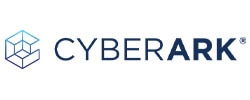July 23, 2024
How IAM Addresses the Challenges of Increasingly Complex IT Environments
Identity and access management solutions simplify access while improving security.
- CHALLENGES AROUND IAM
- IAM SOLUTIONS AND SERVICES
- THE BENEFITS OF EFFECTIVE IAM
IAM requires a holistic approach to security, which can be daunting, particularly when budgets, legacy infrastructure or lack of buy-in are concerns. Circumstances such as mergers and acquisitions can also add complexity. Organizations may need help customizing their IAM platforms for specific environments and then sustaining best practices when internal and external conditions change.
INTEGRATION: Integrating IAM across systems and applications can be complex and time-consuming; 36% of security professionals cite this as their biggest IAM challenge. That’s especially true in environments that are not fully modernized. IT teams also struggle when they lack the skills to implement and configure IAM solutions effectively.
ORGANIZATIONAL CHANGES: Mergers, acquisitions and other periods of change are prime times for phishing. Employees may be uncertain about new roles and protocols, which makes them vulnerable to social engineering — a situation that cybercriminals are happy to exploit. IAM can help mitigate this threat by proactively integrating new users, systems and data.
GOVERNANCE: IAM supports data governance and in turn requires clarity about which data assets exist, where they are and who has access to them. Organizations must establish clear rules about access and enforce them across numerous entry points. Starting with governance may also help optimize IAM costs by identifying legacy technical debt and other inefficiencies early on in the process.
COMPLIANCE: Maintaining compliance in different regions while enforcing consistent IAM practices can be difficult. Increasingly, organizations will also need to incorporate emerging regulations into their security posture, such as guidance around artificial intelligence, for example. IAM solutions can help by automating processes related to consent management, enforcing data minimization, and generating reports in response to audits and inquiries.
CYBERCRIME: Organizations face fast-moving threats, including a well-organized dark web that empowers criminals with everything they need to launch attacks. Access brokers hawking stolen credentials, Ransomware as a Service and social engineering attacks enhanced by AI introduce more complexity and fronts on which to wage a defense.
Click Below to Continue Reading
Key Concepts for IAM and Zero Trust
In April 2023, the Cybersecurity and Infrastructure Security Agency released a revised version of the Zero Trust Maturity Model, which is built on the concept that no user or asset should be implicitly trusted. CISA describes zero trust as “a shift from a location-centric model to an identity-, context- and data-centric approach.” The relationship between IAM and zero trust is clear: Without well-managed identity controls, zero trust is not possible. CISA’s model includes several important concepts:
The Basics: The CISA model comprises five pillars: identity, devices, networks, applications and workloads, and data. Underlying these pillars are three foundational capabilities: visibility and analytics, automation and orchestration, and governance.
Identity: Identity is intrinsic to all of the pillars, which has powerful implications for organizations implementing IAM. As they mature in this area, they typically strengthen other zero-trust pillars as well.
Authentication: Initially, zero-trust identity authentication occurs through MFA, with the validation of multiple attributes. In the most mature state, identity is authenticated continuously — even after initial access — using phishing-resistant MFA.
New Guidance: The Zero Trust Maturity Model provides guidance on shifting identity stores, risk assessments and access management (added to the revised version) from traditional approaches to initial, advanced and optimal zero-trust approaches.
Solutions
Effective IAM solutions offer core capabilities such as role-based access control, user lifecycle management, single sign-on and MFA. Role-based access simplifies the definition, assignment and management of permissions within a least-privilege approach, keeping IAM sustainable and scalable even amid growth.
Identity governance and administration (IGA) features support periodic access reviews and enforce policies consistently across the enterprise, which is essential for regulatory compliance. PAM provides centralized control over elevated privileges, including secure storage of credentials, just-in-time access and session monitoring.
Driven by increases in Software as a Service adoption, cloud entitlements management ensures users have appropriate access to cloud resources through role-based access controls, attribute-based control, continuous monitoring and detailed reporting. Cloud access security brokers can increase visibility and control across cloud applications, but dedicated cloud infrastructure entitlement management tools or IAM solutions with CIEM features may be needed.
IAM solutions often integrate application programming interface security features, managing API access through secure authentication, rate limiting, logging activities, granular access control and enforcement of application access governance policies.
Click Below to Continue Reading
Services
Expert services can provide confidence that leaders have taken the appropriate steps to reduce risk in their organizations.
ASSESSMENTS AND STRATEGY: Organizations that want to evaluate their IAM maturity can start with a holistic assessment that informs the development of a long-term strategy. CDW’s Rapid IAM Strategy Assessment provides an objective evaluation with a scope tailored to each customer’s needs.
Over the course of approximately six weeks, we evaluate IAM solutions, policies and processes, including cloud-based infrastructure, user provisioning, API management, mobile app security, shadow IT, role-based access controls and other areas. Using industry frameworks and relevant compliance mandates, we develop a maturity scorecard, identify vulnerability priorities and create a long-term strategy that enables IAM to play an appropriate role in cybersecurity planning.
IMPLEMENTATION SERVICES: Organizations often want help with the logistics of establishing an end-to-end IAM practice, including IGA and PAM. Common implementation challenges include the existence of legacy platforms, outdated policies and poorly integrated solutions. A comprehensive, well-planned implementation strategy ensures that IAM integrates all of the appropriate elements.
Implementation services can focus on specific objectives, such as adopting zero-trust principles, reducing IAM costs or improving the UX in a hybrid environment. Partnering with CDW is also a way to support an IT team that needs more bandwidth or lacks the skills and expertise to establish an IAM practice that is effectively customized for a specific environment.
RIGHTS AND ACCESS REVIEWS: Most IT and business leaders believe users have access privileges beyond what they need for their jobs. Moreover, in recent years, many organizations have seen an increase in the number of users with remote access: employees, consultants, partners, contractors and temporary staff. Reviews and role management workshops can be crucial to a broader shift toward zero trust’s least-privilege access approach.
CDW can help organizations increase their visibility into the applications that people and devices are accessing and implement measures to align this access with IAM best practices.
CUSTOMER MANAGEMENT: Organizations must balance security with seamless UX, particularly for customers — for example, healthcare patients, university students or retail shoppers. This challenge can be exacerbated when security strategies must accommodate multiple customer-facing channels while achieving regulatory compliance.
CDW’s experts have experience with large, complex organizations that want to enable their customers to interact easily and securely with systems and applications. Our customer identity and access management solutions focus on creating a centrally managed identity for each customer and integrating that across customer-facing systems. The objectives are to reduce security risks and increase efficiency while delivering an enhanced customer experience.
MANAGED SERVICES: Correctly implementing and maintaining IAM can be challenging for lean IT teams. Several factors, such as mergers and acquisitions activity or a lack of internal cybersecurity expertise, may lead an organization to outsource some or all of these functions.
A managed services partner can support IT in several ways. For example, comprehensive support can address Tier 1, 2 and 3 issues with continuous service, while periodic “health checks” ensure IAM programs stay optimized and continue to mature. Organizations often find value in managed services’ cost optimization because they significantly reduce the need for internal security resources while freeing IT staffers to focus on other priorities.
IAM helps organizations adapt risk management to modern work, increase efficiency for IT teams and address complexities that can hamper security efforts.
Reduce Security Risks: IAM prevents unauthorized access by rigorously authenticating users and leveraging contextual data for stronger access control. IAM maintains data integrity and confidentiality and protects assets from unauthorized disclosure or alteration by ensuring only authorized users can access sensitive systems and data. IAM also helps mitigate insider threat risks — a growing concern in industries such as healthcare — by monitoring users’ activities and enforcing least-privileged access.
IAM also addresses vulnerabilities arising from human error, including weak passwords, susceptibility to phishing, and outdated software or devices. Social engineering is rampant and often successful; typically, it takes only seconds for a victim to click a malicious link or provide his or her credentials. IAM can limit the damage by restricting hackers’ movement throughout the environment, even if credentials are compromised.
Simplify IT Management: IAM solutions support IT teams with administrative dashboards, bulk user management, anomaly detection, customizable workflows and policies, and other tools and capabilities. Managing access rights becomes more efficient, while self-service tools enable users to manage their passwords. Automated onboarding and offboarding reduces error and improves UX while ensuring permissions are appropriately granted, restricted and revoked as needed.
In hybrid and cloud environments, IAM solutions reduce the complexity of managing identities across platforms. Solutions can be integrated with cloud services and on-premises systems to provide a unified approach that is consistent and enforceable yet compliant with specific industry or geographic regulations. Platforms also save time in audits and investigations by generating detailed logs and reports for analysis.
Improve Third-Party Management: Third-party access is a crucial aspect of IAM that many organizations find challenging. Many organizations collaborate with multiple vendors, increasing the risk of breaches involving third parties. In one survey, 57% of security professionals said their organizations had experienced an attack or a breach related to a vendor in the past two years. Further, security professionals say supply chains are more complex and often opaque.
IAM helps organizations manage these risks by managing lifecycle access through rigorous authentication and access controls to third-party users. This includes limiting their privileges and revoking access when it is no longer needed. IAM solutions can simplify these processes by increasing visibility into third-party access privileges and histories and assigning access based on carefully defined roles.







